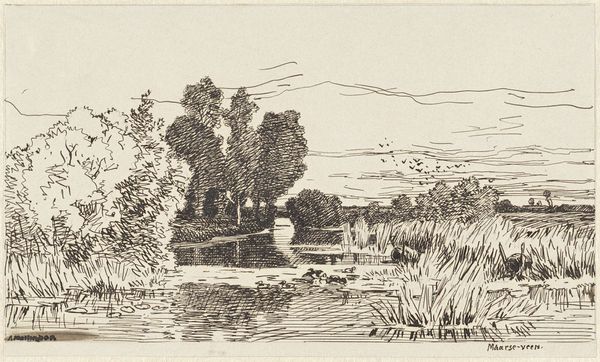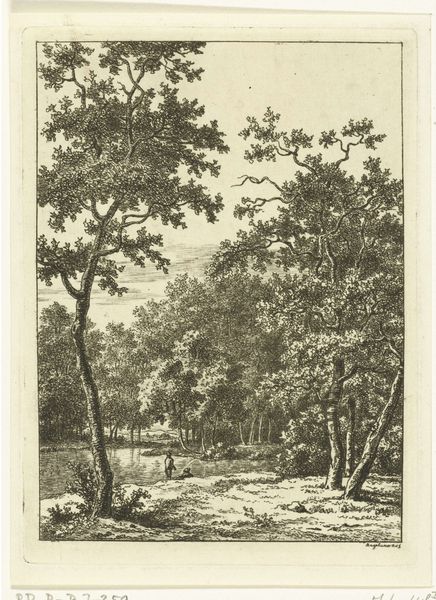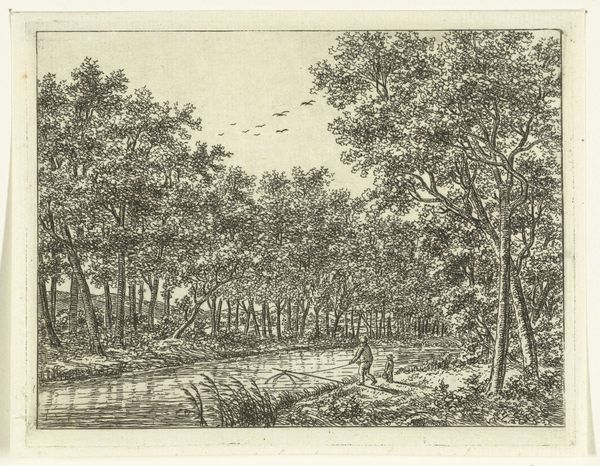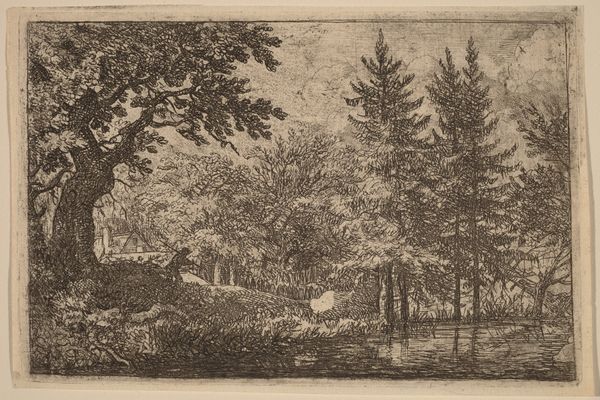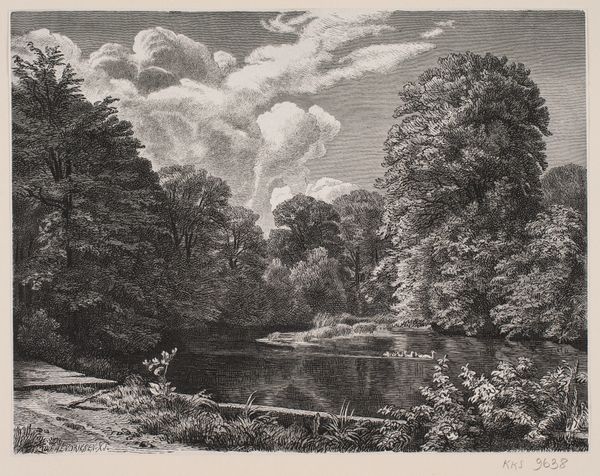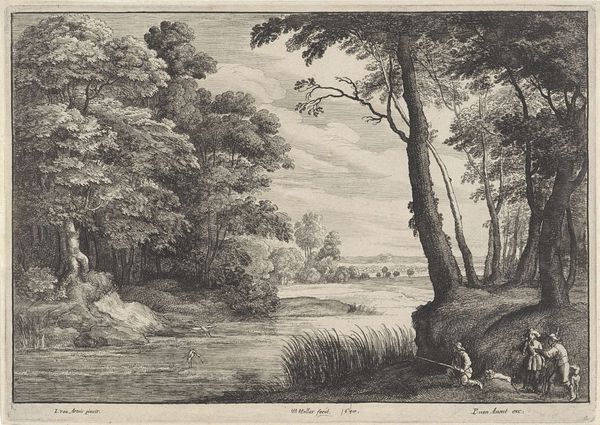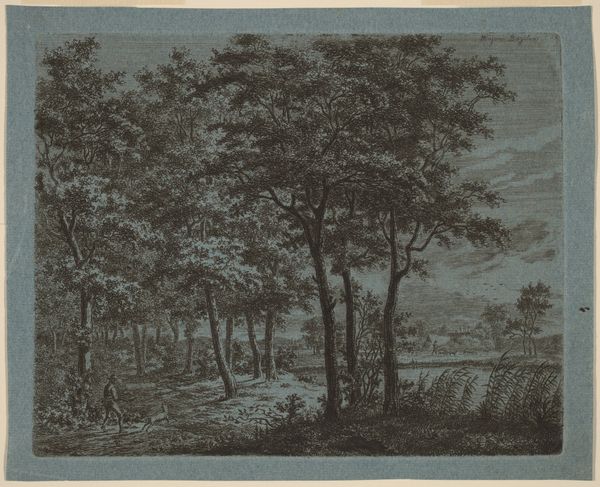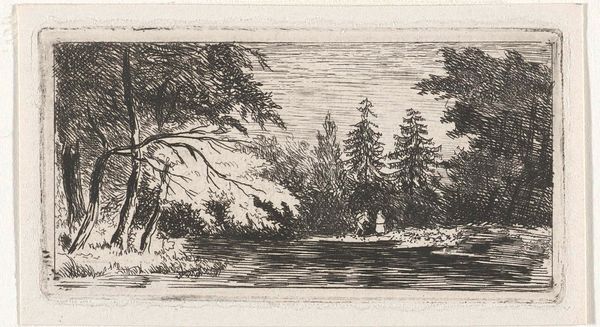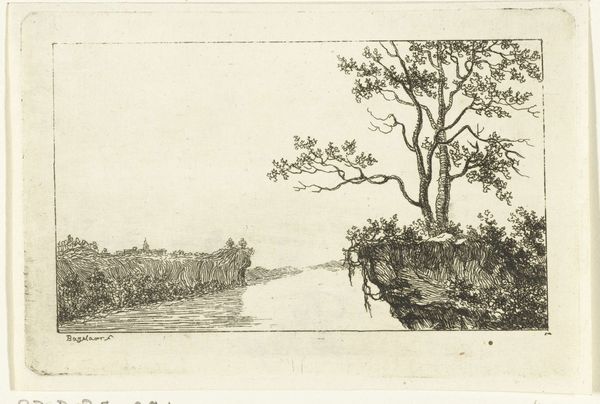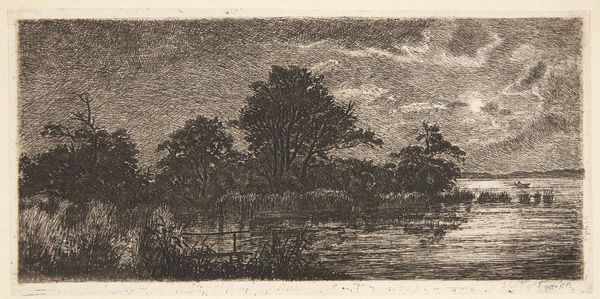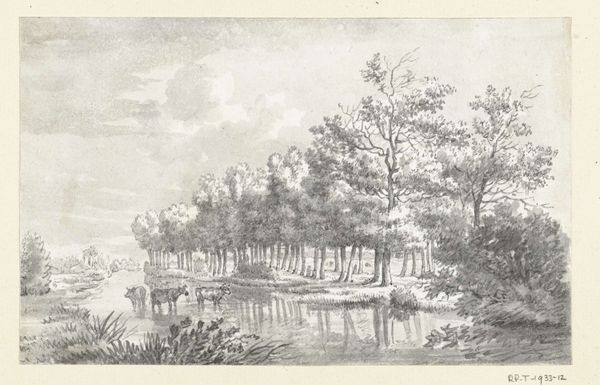
print, woodcut
# print
#
landscape
#
woodcut
#
line
Dimensions: image: 16.83 × 24.61 cm (6 5/8 × 9 11/16 in.) sheet: 21.11 × 28.1 cm (8 5/16 × 11 1/16 in.)
Copyright: National Gallery of Art: CC0 1.0
Curator: This is "Arundel," a woodcut print by Charles William Taylor, likely created sometime in the 1920s or 30s. It's quite striking, isn't it? Editor: Immediately, I feel a sense of hushed anticipation, like waiting for the dawn. The dense, dark woods loom large. All of that dense detail above, yet a still emptiness in the waters beneath. Curator: Yes! Taylor really leaned into the contrast achievable through woodcut. See how the dense foliage is rendered with such intricate lines, almost vibrating with life. The reeds in the foreground, for instance – look at the way each blade catches a suggestion of light, but doesn't reveal it. Editor: Reeds, the ultimate liminal symbol! They sway between water and earth, flexibility and strength. This artwork captures the tension between human intervention—that hinted-at clearing, perhaps—and the relentless reclamation by nature. It reminds me of a subconscious struggle for balance. Curator: I love that you pick up on the "reclamation" aspect. I feel like Taylor, in his time, must have really been responding to growing industrialization—the ways human activity was encroaching on natural landscapes. Editor: The water, almost obsidian in its stillness, feels laden with memory. What reflections does it hold, not just of the trees above, but of centuries past? What truths do these forests conceal? I am thinking about lost knowledge. Curator: That makes me wonder what the story behind "Arundel" is. Was it a specific place? A metaphor? The title hints, I guess. The location is known in West Sussex on the Arun river... I get this weird uncanny feeling that maybe there are also two versions of Charles Taylor as there's an etching with this same title by another Charles W Taylor, from an earlier date, the turn of the century around 1900s! What if our artist was deliberately reaching into history somehow? Editor: The past constantly shadows the present! This Arundel landscape becomes a vessel for our own projected anxieties about time and environmental change. What a visual echo it creates! Curator: What I find rewarding is the work itself—it asks you to slow down. Editor: Right. It's an invitation to find your own reflection, perhaps your lost self, within its layers.
Comments
No comments
Be the first to comment and join the conversation on the ultimate creative platform.


